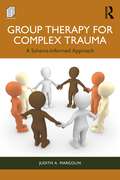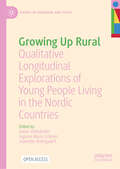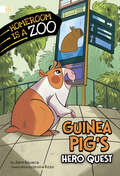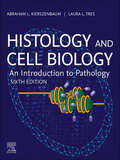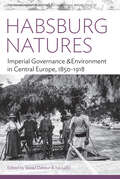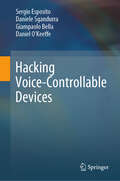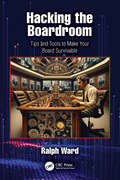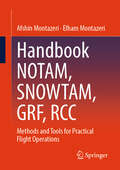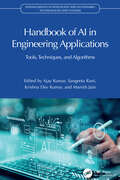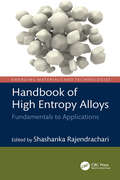- Table View
- List View
Group Dynamics in Exercise and Sport Psychology: New Perspectives
by Mark R. Beauchamp Mark EysThe third edition of Group Dynamics in Exercise and Sport Psychology: New Perspectives explores the unique psychological dynamics that emerge in sport and exercise groups. It provides a clear and thorough guide to contemporary theory, research, and applied practice, covering core themes and cutting-edge topics as well as highlighting directions for future research.Much human behavior in sport and exercise settings is embedded within groups, where individuals’ cognitions, emotions, and behaviors influence and are influenced by other group members. Now in a fully revised and updated third edition, Group Dynamics in Exercise and Sport Psychology: New Perspectives sheds new light on the psychology of groups in exercise and sport settings, providing an entirely new set of perspectives on the theory and research applied to groups in exercise and sport settings. No other book on group dynamics in sport or exercise offers such a close examination of the evidence base, and therefore Group Dynamics in Exercise and Sport Psychology: New Perspectives is important reading for all students, researchers, or practitioners working in sport or exercise psychology, kinesiology, sport and exercise science, sports coaching, or physical education.
Group Therapy for Complex Trauma: A Schema-Informed Approach
by Judith A. MargolinGroup Therapy for Complex Trauma provides a roadmap for professionals trying to address the many issues that arise in group treatment. It’s an excellent training resource for mental health professionals working in institutions that provide higher levels of acute care, including inpatient, partial hospitalization, and/or intensive outpatient programs, as well as those running groups in traditional outpatient settings.Chapters pull the most recent theory and practice into one concise resource, addressing not only how to treat complex trauma but also why doing so matters. They also provide guidance for troubleshooting situations that often arise around when conducting groups with a population that is often highly dysregulated. The second section includes exercises, and handouts that can be reproduced and shared with participants, enabling them to follow along during the group session and to complete exercises and review material in their own time.
Growing Up Green (Grades 3-5): Problem-Based Investigations in Ecology and Sustainability for Learners in STEM
by Janese Daniels Zachary Price Stephen SchrothGrowing Up Green allows learners in grades 3–5 to build critical and creative thinking skills while also improving skills in science, technology, engineering, and mathematics (STEM).Featuring ten problem-based investigations related to sustainability and environmental concerns, this book will give you everything you need to encourage your gifted learners to identify problems, develop research questions, gather and analyze data, develop possible solutions, and disseminate this information to others. Each investigation includes comprehensive teacher instructions, ideas for differentiation, cross-curricular connections, hands-on student activities, reproducible student resources, reflection opportunities, and assessment options.Perfect for general education classrooms, single- or multi-grade gifted classrooms, or pull-out programs, this book is a must read for any educator seeking to delight and challenge their students with projects that touch on issues facing their real world communities today.
Growing Up Rural: Qualitative Longitudinal Explorations of Young People Living in the Nordic Countries (Studies in Childhood and Youth)
by Kaisa Vehkalahti Ingunn Marie Eriksen Jeanette ØstergaardThis open access book explores the everyday lives of young people living in rural areas in Nordic countries, drawing on qualitative longitudinal methods. The young people&’s life stories are set against a backdrop of Nordic welfare states under increasing global pressure. Growing Up Rural contributes to the growing literature on spatialized youth studies by providing a refreshing antidote to one-sided stories about depraved young lives in rural areas. By drawing on novel empirical analyses of longitudinal data, thereby foregrounding processual shifts and changes over time, it highlights the vast varieties in young people&’s lives as well as the agency and navigation skills required to master vulnerabilities in transitions to adulthood. It contributes to ongoing discussions about how longitudinal qualitative research design provides a deeper understanding of the lives of young people as they unfold. This book provides useful and inspiring insights for scholars and students of youth studies, rural studies, life course studies, and qualitative research more generally.
Guardians of the Digital Age: Securing the Future (Security, Audit and Leadership Series)
by Elçin BirenThe internet wasn’t built for time travelers. But when ethical hacker and mother Elsa and her 14-year-old son, Aiden, uncover a hidden code buried deep within cyberspace, they are pulled into a high-stakes journey through cybersecurity history—from the birth of ARPANET in 1969 to the AI-driven cyberwars of 2040. Their mission? Trace the origins of digital security before an unknown force alters history and reshapes the future of technology forever. As they jump across decades, they encounter internet pioneers, legendary hackers, and cyber-rebels who changed the digital world. But not everything in the past wants to stay in the past. Real dangers lurk in the timeline. Elsa and Aiden must navigate malware, mass surveillance, cyberwarfare, and a growing mystery that threatens the foundation of the internet itself. As they race against time, they also face their own fears and shifting trust in each other. A thrilling bridge between past and future, this book introduces parents and teens to the evolution of the internet and the most essential skill of our time—digital security. "The future is written in code—but cybersecurity is about trust and humanity. Will they protect it, or rewrite it?"
Guide to Reporting Verbs: Citing Sources in Academic Writing
by Jacob D. Rawlins Grant Eckstein Elizabeth HanksGuide to Reporting Verbs is an accessible guide to citing sources in academic writing across the disciplines. The way writers introduce previous literature is essential to authorial voice. Specifically, the effective use of reporting verbs can highlight important details about the cited work while allowing writers to present themselves as experts in their field. This reference guide lists the most common reporting verbs across various disciplines in the hard and soft sciences and provides important information about how they can be used in academic writing.The book: lists prevalent reporting verbs across six disciplines: applied linguistics, biology, history, philosophy, political science, and physics provides information on authorial voice for each reporting verb highlights effective use of each reporting verb through inclusion of a definition, the lemma along with a few members of the word family, stance act(s), common contextual environments, example sentences from academic sources, the verb’s frequency in academic writing (based on two corpora, or databases), and the verb’s relative frequencies across disciplines offers practical tasks and exercises for students as online support material Organized so that readers can use the guide as either a quick reference or a study aide, this resource will empower students to use appropriate, discipline-specific reporting verbs in their academic writing.
Guinea Pig's Hero Quest
by John SazaklisClass pet Peanut Buttercup is thrilled to learn that Ms. Markela's class is going to the zoo. The little guinea pig wants to meet her hero: Athena, the zoo's capybara! Sneaking a ride to the field trip, Peanut Buttercup finds herself closer to her hero than she ever could have imagined. Is the zoo ready for the class and its sneaky class pet?
HISTOLOGY AND CELL BIOLOGY: An Introduction to Pathology
by Abraham L. Kierszenbaum Laura L. TresThe first text to integrate microscopic anatomy with cell biology, general pathology, and physiology, Histology and Cell Biology: An Introduction to Pathology, Sixth Edition, continues to set the standard for studying today's rapidly evolving, molecular-oriented medicine. <P><P> Drs. Abraham L. Kierszenbaum and Laura L. Tres present essential concepts in an accessible, easy-to-understand manner, with full-color illustrations, diagrams, photomicrographs, and pathology photos fully integrated on every page. Linking pathological conditions to basic sciences throughout, this award-winning text helps you build a substantial clinical knowledge base while learning the structure and function of normal organs. <BR> - Provides cover-to-cover updates throughout, reflecting current terminology, basic science, and clinical concepts <BR> - Includes new material at the beginning of each chapter that assists you with the microscope as you first encounter the architectural complexity of tissues or organs <BR> - Includes Primers in most chapters that provide a practical, self-contained integration of histology, cell biology, and pathology, helping you understand the relationship between basic and clinical sciences <BR> - Contains Essential Concepts at the end of each chapter highlighting relevant issues—perfect for studying and reviewing for in-course and board examinations <BR> - Uses a light green background throughout the text to identify essential concepts of histology—a feature requested by both students and instructors to quickly locate which concepts are most important for beginning learners or when time is limited <BR> - Identifies clinical terms throughout the text and lists all clinical boxes in the table of contents for quick reference <BR> - Helps you understand the links between chapter concepts with concept mapping animations online, providing a dynamic supplement to in-class instruction
Habsburg Natures: Imperial Governance and Environment in Central Europe, 1850-1918 (Environment in History: International Perspectives)
by Jawad Daheur Iva LučićWithin the Habsburg Empire of the late nineteenth century, nature became a central focus of political, economic, and scientific attention. A source of valuable natural resources and a platform for consolidating wider, territorial rule, its management and control was subsumed into a broader system of imperial governance. In this exacting analysis of the correlation between the environment and power, Habsburg Natures explores how the natural world fundamentally shaped the political and economic landscape within the Austro-Hungarian Empire from 1850 to 1918. Ranging from forestry and coal-mining to river politics and natural disasters, this volume spotlights how deeply intertwined the histories of environmentalism and empire are.
Hacking For Dummies
by Kevin BeaverThink like a hacker to protect your sensitive information To safeguard your private data from prying eyes, it helps to understand how hackers do what they do. Hacking For Dummies gives you the tools you need to step into a hacker's shoes and discover the best strategies to secure your data. You won't learn how to steal your neighbors' Wi-Fi, but you will gain the skills to keep nosy hackers out of your systems and applications. With clear, jargon-free explanations, you'll learn to recognize cyberthreats and keep your information safe. This updated edition includes new content on AI, the Internet of Things (IoT), and the security implications of hybrid work. Understand the tools hackers use to steal sensitive data from individuals and businesses Discover methods of protecting your information—including improving your security, recognizing phishing scams, and more Assess your current network and cloud configurations from a hacker's perspective using proven vulnerability and penetration testing techniques Defend against AI-generated scams, lost devices, and other common threats Hacking For Dummies is for anyone looking to protect their devices from hacking—at home, at the office, or anywhere in-between.
Hacking Voice-Controllable Devices
by Sergio Esposito Giampaolo Bella Daniele Sgandurra Daniel O’KeeffeVoice-controllable devices allow hands-free interactions, offering a modern user experience and helping impaired users. However, the voice channel that enables this interaction is also one of their main weaknesses. Higher usability often comes with higher security and privacy risks. As Voice-Controllable Devices are no exception to this, a plethora of new attacks have been carried out against them in recent years. In this book, several attacks are analysed against the voice channel available in the literature; it then devises a bespoke kill chain to facilitate the classification of attack steps and future research. Additionally, the work analyses the design of the notorious Alexa vs Alexa attack, which turned Echo Dot devices against themselves in 2022. Finally, the present volume explores measures against all these attacks and raise important questions about their suitability for user needs. Topics and features: Discusses timely security and privacy challenges in IoT devices, with an emphasis on voice-controllable devices Provides a framework for assessing and studying attacks against the voice channel Addresses practical attacks successfully carried out against real devices, showing that an impactful attack need not be complex Explores advanced safeguards from a new perspective, questioning whether research is proceeding in the right direction This powerful volume—containing tips, tricks, and techniques used by ethical hackers to breach the voice channel—serves as the perfect guide for researchers conducting security and privacy research on IoT. It also provides food for thought for graduate students and enthusiasts of these subjects who do not shy away from the mathematics behind the world of machine learning.
Hacking the Boardroom: Tips and Tools to Make Your Board Survivable
by Ralph WardIt’s scary in the boardroom. Global board members now face punishing hands-on oversight demands for risk, technology, liability, diversity, and sustainability. Yet the “board of directors” system, our universal governance model, was never designed for such a demanding, tactical role. Board members urgently need solid tips, tools, and advice to make this exploding governance transition survivable.Ralph Ward’s new book gathers these first-hand, best-practice “boardroom hacks” from around the world – intelligence that boards must have now to do a better oversight job, with less time, less effort, and fewer legal dangers. These are “how-to” insights from front-line board members, CEOs, corporate staffers, top consultants, and legal advisors. Such intelligence is learned the hard way, through trial and error in most boardrooms. Now, readers can discover this valuable boardsmanship insight, collected in a single volume.Topics include:• What are the hottest new demands on boards (tech oversight, risk, ESG, etc.), and how are boards managing them?• How on earth does a director absorb the huge amount of data, reports, and research required for governance now?• How board committees are taking on the heavy lifting of oversight, and blueprints for committee management.• How smart boards and staff are turning technology, online board portals and meetings, and AI into practical tools to shake up meetings.• What sticky “behind boardroom doors” leadership, liability, personal, and process flashpoints bring the most danger, and how are directors resolving them?
Hagan Proudly Presents
by Shannon McClintock MillerHagan loves whales, and he's thrilled when he and a partner are assigned to give a presentation on whale conservation. Then, during a class video call with a marine biologist, Hagan starts to feel overwhelmed by hearing unfamiliar words. Just what is a baleen, anyway? There's so much to learn! But by setting goals, asking great questions, and sharing their learning with others, Hagan and his partner use technology to highlight the ISTE empowered learner standard. Created in partnership with ISTE, this early chapter book offers an engaging and relatable introduction to important concepts in technology education.
Hair-Raising Upcycled Halloween Accessories
by Ruthie Van OosbreeDo you love all things spooky, scary, and eerie? Then it’s time to craft some hair-raising Halloween accessories with this easy-to-follow how-to guide! Create a creepy crown of eyeballs. Build massive monster feet to stomp around in. Make dazzlingly creepy spider sunglasses. These fun and spooky upcycled accessories will be the hit of any Halloween party!
Hajj
by Golriz GolkarHajj is a holy journey that every adult Muslim tries to make at least once. Readers can follow the millions of Muslims who gather each summer in Saudi Arabia to visit the Holy Mosque and the Kaaba shrine. Pilgrims pray, fast, and celebrate Eid al-Adha together. Lively photos and easy-to-read text help readers learn about contemporary celebrations of this ancient pilgrimage. Discover how the shared journey of Hajj brings Muslim people together in solemn promises and joyful celebration.
Hammerhead Sharks at Risk
by Kathryn ClayHammerhead sharks have skills and body parts that keep them safe from predators, from their hunting abilities to their sharp teeth. But these unusual sharks are endangered. Because of overfishing and climate change, more hammerheads are dying than are being born. Readers will learn why hammerhead sharks are at risk, what it means to be endangered, and how people can help. Each title includes activities and trivia questions to help readers connect with the content.
Handbook NOTAM, SNOWTAM, GRF, RCC: Methods and Tools for Practical Flight Operations
by Afshin Montazeri Elham MontazeriThe book deals with the publication and creation of NOTAMs and SNOWTAMs as well as the Global Reporting Format (GRF) from a flight operations perspective. It is primarily aimed at airport employees working in the field of flight operations (e.g. flight dispatchers) and flight crews whose task it is to use this information to ensure safe flight operations. The work contains a comprehensive presentation of all relevant information for airport staff to write and publish NOTAMs in accordance with the requirements of the European Aviation Safety Agency (EASA) and the International Civil Aviation Organization (ICAO). It also provides relevant added value for all other participants in the aviation industry who need to read and understand NOTAMs. This includes in particular students in the field of air traffic management.
Handbook of AI in Engineering Applications: Tools, Techniques, and Algorithms (Advancements in Intelligent and Sustainable Technologies and Systems)
by Ajay Kumar, Sangeeta Rani, Krishna Dev Kumar, and Manish JainThere is a need to categorize artificial intelligence (AI) applications, tools, techniques, and algorithms based on their intended use in various design stages. Specifically, there is a need to explore AI techniques that are utilized for tasks such as designing, including but not limited to inspiration, idea and concept generation, concept evaluation, optimization, decision-making, and modeling. This includes things like generating ideas and concepts, evaluating those ideas, optimizing designs, making decisions, and creating models. This handbook brings all of these categories with compatible AI techniques, tools, and algorithms together in one place.Handbook of AI in Engineering Applications: Tools, Techniques, and Algorithms covers applications of AI in engineering and highlights areas such as future cities, mechanical system analysis, and robotic process automation, and presents the application of AI and the use of computerized systems that aim to simplify and automate the processes of design and construction of civil works. The handbook discusses the design and optimization of mechanical systems and parts, such as engines, gears, and bearings, which can be automated using AI and it explores the performance of robotics and automation systems which can be simulated and analyzed using AI to forecast behavior, spot future issues, and suggest changes. Rounding out this handbook is AI technology automation and how analyzing relevant data can provide a reliable basis for relevant personnel to carry out their work.This handbook fills the gap between R&D in AI and will benefit all stakeholders including industries, professionals, technologists, academics, research scholars, senior graduate students, government, and public healthcare professionals.
Handbook of AI-Based Mechatronics Systems and Smart Solutions in Industrial Automation (Intelligent Manufacturing and Industrial Engineering)
by Vandana Sharma Pushpalatha Naveenkumar Gunapriya DevarajanArtificial intelligence (AI) and mechatronics are booming areas where most of the industrial sectors are becoming smart nowadays. This handbook includes material of multidisciplinary content from the AI, mechanical, and electronics engineering domains, among others. It gives insights into various application sectors discussing current global developments in mechatronics employing AI technology and addressing the complexity of current issues and the effects of diverse mechatronics systems.Handbook of AI-Based Mechatronics Systems and Smart Solutions in Industrial Automation focuses on system automation, predictive analysis, preventive analysis, and real-time decision-making systems for next-generation automation. It discusses the advancements of mechatronics systems using AI applications along with the global approach toward smart industrial automation and presents the impact of AI on today’s work of autonomous and industrial automation. The book discusses future research potential and is beneficial to manufacturing, healthcare, and finance disputes, while it offers AI algorithms to analyze large amounts of data and identifies patterns, trends, and anomalies for accurate predictions and optimization processes. The handbook also addresses use cases and case studies related to AI in mechatronics along with applications.Scholars in the field of AI in mechatronics and related applications will find this book useful. In particular, attention is drawn to both fundamental ideas and important practical contexts. Readers interested in the most recent findings in the field of problem-oriented processing approaches in mechatronics, including those in academia, data science, industry, research, and graduate and undergraduate students, will find this fascinating handbook extremely interesting.
Handbook of Complementary, Alternative, and Integrative Medicine: Education, Practice and Research, Vol.6: Education, Practice and Research Around the World
by Al-Worafi, Yaser MohammedPresenting information on more than 30 countries, this book addresses Complementary, Alternative, and Integrative Medicine (CAM) education, practice, and research issues, and regulations and laws, prevalence, and workforce issues, among other topics. It is Volume 6 of six that describe the education, practice and research-related issues and the efficacy and safety of CAM in treating various conditions. The purpose of these six volumes (sold individually or as a set) is to explain how complementary, alternative, and integrative medicine is practiced around the world, to share the best practices/experiences in terms of education, practice, and research, and identify the challenges and suggest recommendations to overcome the identified challenges.Key Features• Describes the complementary, alternative, and integrative medicine education, practice, and research in more than 30 countries• Aims to share information and establish best practices in complementary, alternative, and integrative medicine research• Country by country, it presents regulations and laws, prevalence, and workforce issues in CAM
Handbook of Deep Learning Models for Healthcare Data Processing: Disease Prediction, Analysis, and Applications (Advancements in Intelligent and Sustainable Technologies and Systems)
by Ajay Kumar Surbhi Bhatia Khan Deepak Dembla Seema TinkerIn recent years, deep learning has shown great potential in transforming various fields including healthcare. With the abundance of healthcare data being generated every day, there is a pressing need to develop efficient algorithms that can process and analyze this data to improve patient care and treatment outcomes.Handbook of Deep Learning Models for Healthcare Data Processing: Disease Prediction, Analysis, and Applications covers a wide range of deep learning models, techniques, and applications in healthcare data processing, analysis, and disease prediction, providing a comprehensive overview of the field. It focuses on the practical application of deep learning models in healthcare and offers step-by-step instructions for building and deploying models and using real-world examples. The handbook discusses the potential future applications of deep learning models in healthcare, such as precision medicine, personalized treatment, and clinical decision support. It also addresses the ethical considerations associated with the use of deep learning models in healthcare, such as privacy, security, and bias. It provides technical details on deep learning models, including their architecture, training methods, and optimization techniques, making it useful for data scientists and researchers.Written to be a comprehensive guide for healthcare professionals, researchers, and data analysts, this handbook is an essential need for those who are interested in using deep learning models to analyze and process healthcare data. It is also suitable for those who have a basic understanding of machine learning and want to learn more about the latest advancements in deep learning in healthcare.
Handbook of Design and Industry: Scenarios for Sustainable Futures
by Rita Assoreira Almendra Maria João Félix Fátima Pombo Moreira da Silva, Fernando Jorge de Sousa Cruz, PauloThe twenty-first century has been beset by a global pandemic, war and increasingly concerning environmental disasters. Designers and industries have been forced to imagine a world in which the only way to move forward is to look back. The design and industry sectors need to understand the role they can play in removing obstacles to social progress and work together to create healthier human societies that can interact with the world in a sustainable way.This book presents contributions from leading experts that reveal that a better and more prosperous world is achievable through good work and system design. This book consists of chapters that bring together researchers, academics, policy makers, and designers from technology companies and business associations with the objective of developing a focused vision that enhances innovation through design and industry for a better future. Through a transdisciplinary scientific exchange, it lists responses to the challenges of climate change and environmental degradation that will contribute to a more modern, resource-efficient, competitive economy, with smart, sustainable, and inclusive growth, promoting knowledge, inter-sector collaboration, health, education and a digital society for all. By putting the human at the heart of what can be accomplished, this book investigates better design in the disciplines of work, healthcare, product, system, manufacturing, and industry. The reader will gather an interdisciplinary perspective on what good design can achieve and why it is needed to challenge the climate crisis.The Handbook of Design and Industry: Scenarios for Sustainable Futures is essential reading for researchers and academics in the fields and disciplines of ergonomics/human factors, occupational health and safety, industrial design, product design, industrial engineering, materials engineering, process engineering, computer engineering, communication design, electronics and telecommunications engineering.
Handbook of Emergency Response: A Human Factors and Systems Engineering Approach, Second Edition (Environmental and Occupational Health Series)
by LeeAnn Racz and Adedeji B. BadiruDespite pre-emptive preparations, disasters can and do occur and are a fact of life. Whether natural disasters, catastrophic accidents, or terrorist attacks, the risk cannot be completely eliminated. A carefully prepared response is your best defense. This fully updated second edition of the Handbook of Emergency Response presents practical advice and guidelines on how to plan the coordinated execution of emergency response.This handbook incorporates human factors and a systems engineering approach to emergency response project management. It provides cutting-edge research in developing a systematic structure for communication, cooperation, and coordination. Managing a project in the wake of a tragedy is complicated and involves various emotional, sentimental, reactive, and chaotic responses. This is the time when a structured communication model is most needed. This second edition includes important lessons learned and developments since the first edition was published, as well as additional information devoted to systems thinking and industrial engineering in planning for responses to emergencies. The reader will develop a thorough understanding of how to handle an emergency response using a systems approach.The handbook is an ideal purchase for any student or practitioner of human factors, safety, systems engineering, events management, local or federal governance, or those in the emergency services.
Handbook of Global Philosophies on AI Ethics: Toward Sustainable Futures
by Naresh Singh Ram B. RamachandranThis book offers an exploration of the diverse perspectives shaping the future of artificial intelligence (AI), highlighting the influence of non-Western thinking in its development. What would the impact be if AI were developed with the wisdom of Ubuntu, the harmony of Confucian thought, or the Indian principle of Vasudhaiva Kutumbakam, "the world is one family", at its core? This thought-provoking collection brings together leading voices from around the globe to reimagine AI systems that are fair, ethical, and inclusive. Addressing critical issues such as bias, fairness, privacy, and existential risks, it challenges the status quo and envisions a future where AI reflects the values of all humanity—not just a select few. Exploring the influence of topics like religion, culture, and social movements, the book examines how these perspectives shape AI’s application in industries such as finance, education, and the military, while underscoring the importance of establishing robust ethical guardrails. Whether you’re a curious reader, a policy maker, a scholar, or a tech innovator, this book is your guide to understanding how different cultural perspectives can redefine AI ethics. It’s time to ask: what kind of world do we want AI to build for us all?
Handbook of High Entropy Alloys: Fundamentals to Applications (Emerging Materials and Technologies)
by Shashanka RajendrachariHandbook of High Entropy Alloys (HEAs) offers a comprehensive and multidisciplinary overview of these advanced materials from foundational principles to synthesis techniques, advanced characterizations, and preparation methods. It also explores conventional as well as novel and emerging applications. Provides a brief introduction to HEAs, offering essential background for readers new to the field Covers various metallurgical techniques, starting from the traditional to advanced techniques used to prepare HEAs Discusses the chances of forming various possible phases and their predictions using different methods Details advanced instruments used to characterize microstructural, mechanical, corrosion, wear, and oxidative resistance Investigates corrosion and catalytic, high-temperature, and high-strength properties Describes an array of applications such as hydrogen splitting, energy conversion, electrochemical sensors, fuel cells, and batteries This wide-ranging reference offers researchers, engineers, and engineering students a complete understanding of the preparation of high entropy alloys for modern and advancing applications.

